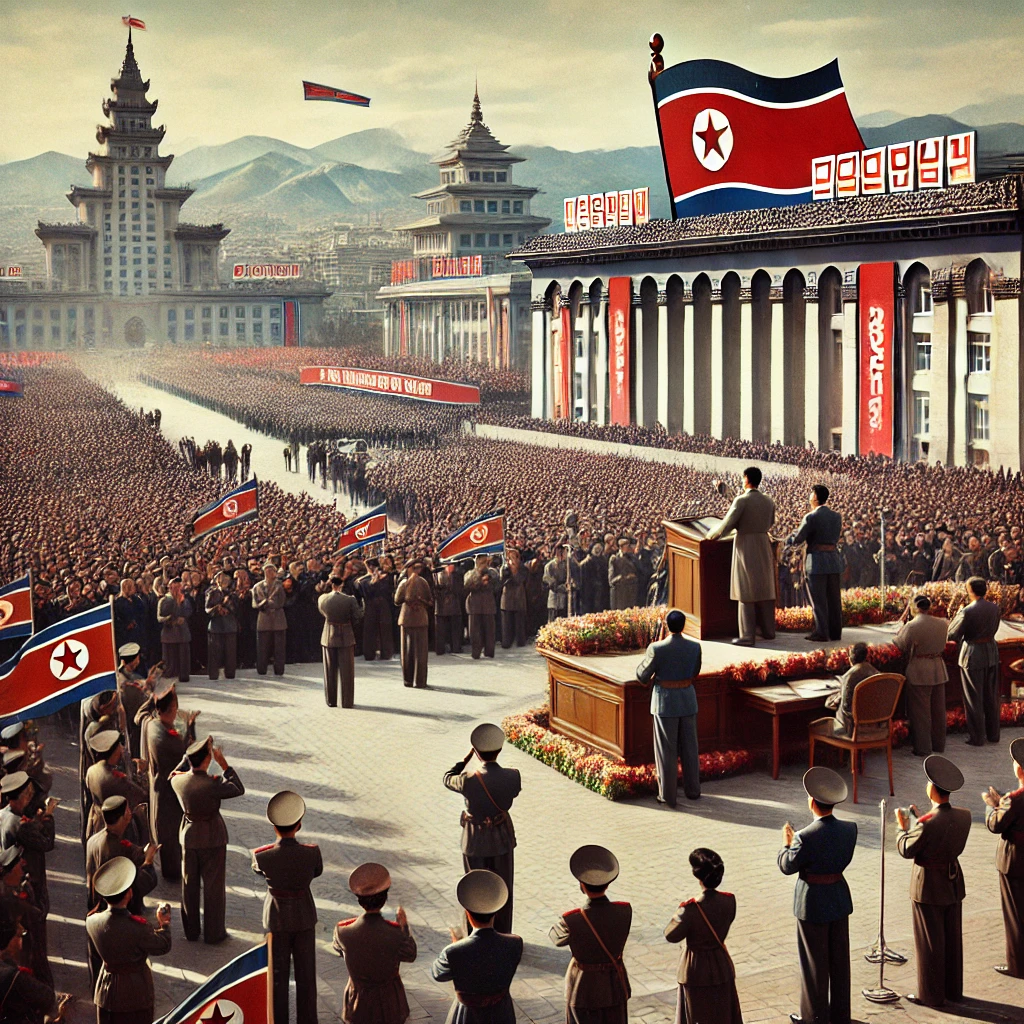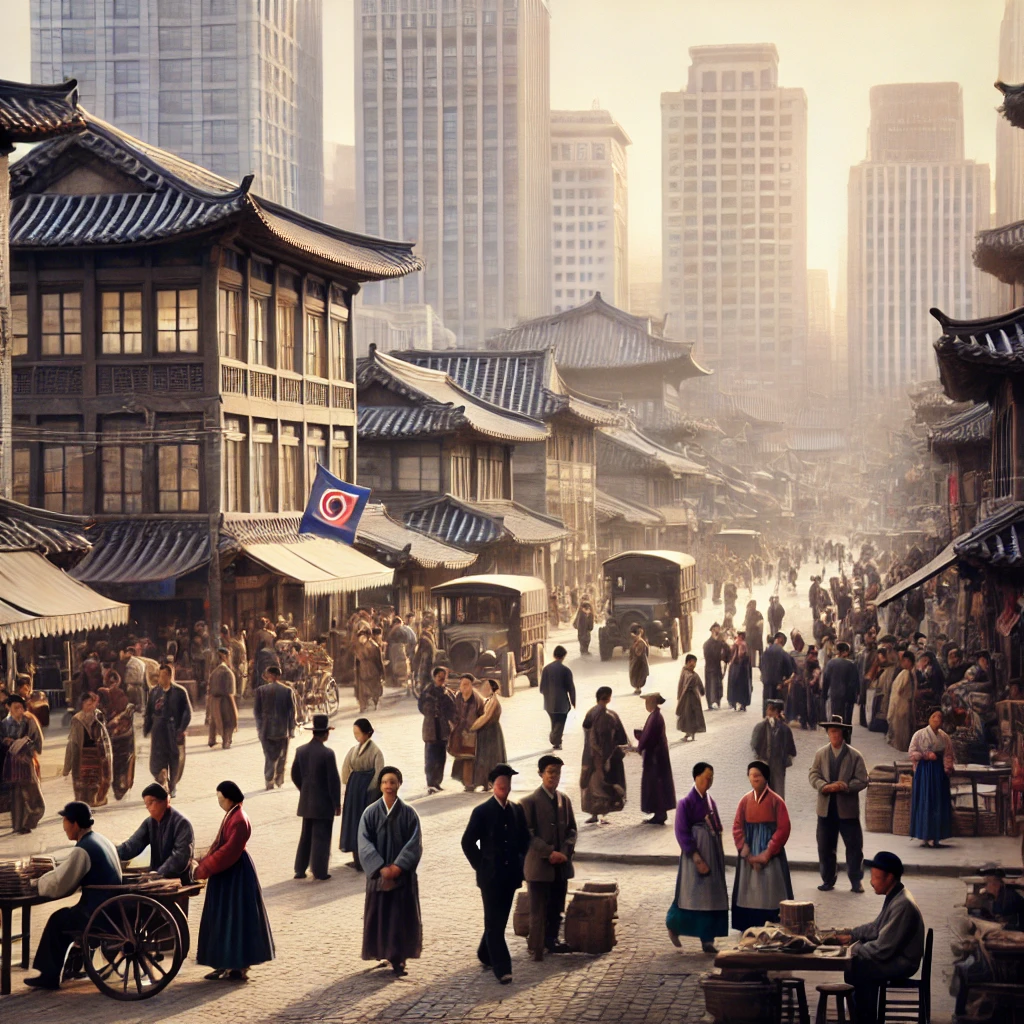On September 9th, 1948, the Democratic People’s Republic of Korea (North Korea) was officially proclaimed, marking the birth of a new and heavily militarized state on the Korean Peninsula. This event set the stage for one of the most enduring and dangerous conflicts of the 20th century—the Korean War—and shaped the geopolitical landscape of East Asia for decades to come. The establishment of North Korea, under the leadership of Kim Il-sung, was a direct result of the post-World War II division of Korea, a division that would have profound and lasting consequences.
The division of Korea began in the closing days of World War II when the Korean Peninsula, which had been under Japanese occupation since 1910, was liberated by Allied forces. The Soviet Union occupied the northern part of Korea, while the United States took control of the southern portion. This division, initially intended to be temporary, soon became permanent as Cold War tensions escalated between the Soviet Union and the United States. The 38th parallel, which was meant to serve as a simple line of demarcation, became a heavily fortified border that would eventually separate two ideologically opposed regimes.
The Establishment of North Korea
The proclamation of the Democratic People’s Republic of Korea (DPRK) in 1948 was the culmination of efforts by the Soviet Union to establish a communist government in the northern half of Korea. Under the guidance of the Soviets, Kim Il-sung, a former anti-Japanese guerrilla fighter and a loyal communist, was installed as the leader of North Korea. Kim’s leadership was characterized by the establishment of a centralized, authoritarian regime that was deeply aligned with Soviet communist ideology.
Kim Il-sung quickly consolidated power, eliminating political rivals and establishing a cult of personality that would define North Korean politics for decades. The DPRK’s government was modeled on the Soviet system, with a single-party state, a centrally planned economy, and a focus on heavy industry and militarization. The new regime also implemented land reforms and nationalized key industries, efforts that were aimed at gaining the support of the rural population and consolidating state control over the economy.

The Division of the Korean Peninsula
The creation of the DPRK in the north was paralleled by the establishment of the Republic of Korea (ROK) in the south, supported by the United States. Syngman Rhee, a staunch anti-communist, became the first president of South Korea. The two Koreas were ideologically opposed from the outset, with the North adhering to communist principles under Soviet influence, while the South embraced capitalism and aligned itself with the Western bloc.
The division of the Korean Peninsula was not merely a geographical split but also a deep ideological rift that reflected the broader global struggle between communism and capitalism during the Cold War. Both North and South Korea claimed to be the legitimate government of the entire peninsula, setting the stage for an inevitable conflict. The Korean War, which would begin in 1950, was a direct consequence of these irreconcilable differences and the superpower rivalry between the United States and the Soviet Union.
The Outbreak of the Korean War
In June 1950, less than two years after the establishment of the DPRK, North Korean forces, under the command of Kim Il-sung, launched a surprise invasion of South Korea. This marked the beginning of the Korean War, a brutal conflict that would last for three years and result in millions of casualties. The war quickly escalated as the United States, leading a United Nations coalition, intervened on behalf of South Korea, while China entered the war on the side of North Korea.
The Korean War was characterized by intense fighting, significant civilian suffering, and widespread destruction. It also solidified the division of Korea, as the conflict ended in 1953 with an armistice agreement rather than a peace treaty, leaving the peninsula technically still at war. The 38th parallel remained the dividing line, now fortified by the Korean Demilitarized Zone (DMZ), one of the most heavily militarized borders in the world.
The Legacy of Kim Il-sung
Kim Il-sung’s leadership during and after the Korean War established him as the undisputed leader of North Korea. He became a central figure in North Korean history, revered as the “Great Leader” and the “Eternal President.” Under his rule, North Korea developed into a highly centralized, totalitarian state with a rigid ideology centered around Juche, or self-reliance. This ideology, which combined elements of Marxism-Leninism with a strong emphasis on national independence, became the guiding principle of North Korean society.
Kim Il-sung’s rule also saw the development of a pervasive cult of personality, with his image and teachings dominating every aspect of North Korean life. The state’s control over the economy, media, and even personal life was absolute, creating a society that was isolated from the outside world and heavily indoctrinated. Kim’s policies of militarization and self-reliance led to significant hardships for the North Korean population, particularly during periods of economic crisis.

The Impact on Global Geopolitics
The establishment of North Korea and the subsequent Korean War had a profound impact on global geopolitics. The war was one of the first major conflicts of the Cold War, setting the stage for subsequent confrontations between the United States and the Soviet Union in various parts of the world. It also led to the militarization of the Korean Peninsula, with both North and South Korea maintaining large standing armies and the United States stationing troops in South Korea as a deterrent against further aggression.
The existence of North Korea as a communist state allied with China and the Soviet Union also contributed to the global balance of power during the Cold War. North Korea’s strategic location and its role as a buffer state between China and U.S.-aligned South Korea made it a key player in the Cold War dynamics of East Asia. The continuing tension on the Korean Peninsula remains one of the legacies of this period, with North Korea’s nuclear ambitions adding a new dimension to the threat.
The Enduring Division of Korea
The division of Korea into North and South has persisted for over seven decades, becoming one of the most intractable conflicts in modern history. Despite numerous attempts at dialogue and reconciliation, the two Koreas remain deeply divided, both politically and ideologically. The DMZ stands as a stark symbol of this division, a physical and psychological barrier that separates families and serves as a constant reminder of the unfinished business of the Korean War.
The division of Korea has also had significant human costs, with millions of families separated by the border and unable to reunite. The contrast between the two Koreas—North Korea as a totalitarian state with widespread poverty and South Korea as a prosperous democracy—highlights the divergent paths taken by the two nations since 1948.
The Continuing Influence of the Kim Dynasty
The Kim dynasty, established by Kim Il-sung, continues to rule North Korea to this day. After Kim Il-sung’s death in 1994, his son Kim Jong-il took power, followed by his grandson Kim Jong-un, who currently leads the country. The dynasty’s rule has been marked by a continuation of the policies of isolation, militarization, and strict control over society. North Korea’s pursuit of nuclear weapons under Kim Jong-un has brought the country into direct confrontation with the international community, further entrenching its isolation.
The Kim dynasty’s rule has also perpetuated the personality cult surrounding the leaders, with Kim Jong-un now being revered in the same way as his father and grandfather. This continuity of leadership has ensured that the principles and policies established by Kim Il-sung remain central to North Korean governance, even as the country faces new challenges in the 21st century.
The Historical Significance of North Korea’s Establishment
The establishment of North Korea in 1948 was a pivotal moment in 20th-century history, with consequences that continue to shape global politics today. The creation of the DPRK solidified the division of the Korean Peninsula and set the stage for one of the most dangerous and enduring conflicts of the Cold War. North Korea’s existence as a communist state has had far-reaching implications, influencing the geopolitical dynamics of East Asia and contributing to the global balance of power during the Cold War.
North Korea’s establishment also highlights the complexities of post-World War II state-building, where ideological divides often led to the creation of new states that reflected the broader conflicts of the Cold War era. The persistence of the North Korean regime, despite economic hardships and international isolation, underscores the enduring impact of these historical events.

A Legacy of Conflict and Division
As North Korea continues to navigate its path under the leadership of the Kim dynasty, the legacy of its establishment in 1948 remains a central part of its identity. The division of Korea, the Korean War, and the ongoing tensions on the peninsula are all rooted in the events surrounding the creation of the DPRK. Understanding the historical context of North Korea’s establishment is essential to comprehending the current dynamics on the Korean Peninsula and the broader challenges of achieving peace and stability in the region.
The proclamation of the Democratic People’s Republic of Korea on September 9th, 1948, was more than just the birth of a new state—it was the beginning of a conflict that would shape the world for generations. The enduring division of Korea and the continued relevance of North Korea in global geopolitics remind us of the profound and lasting impact of that momentous day.
